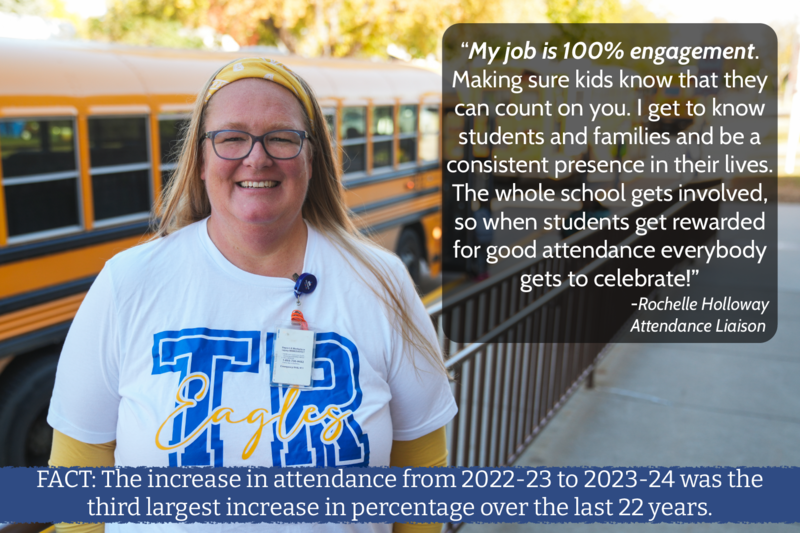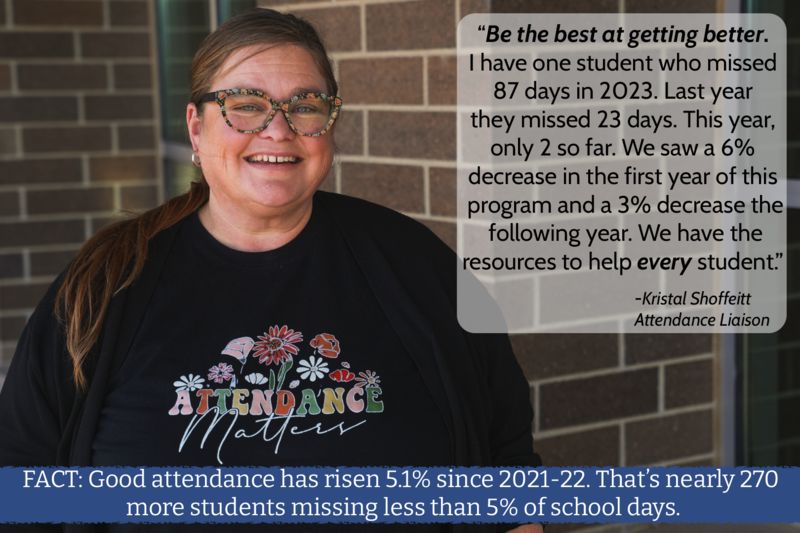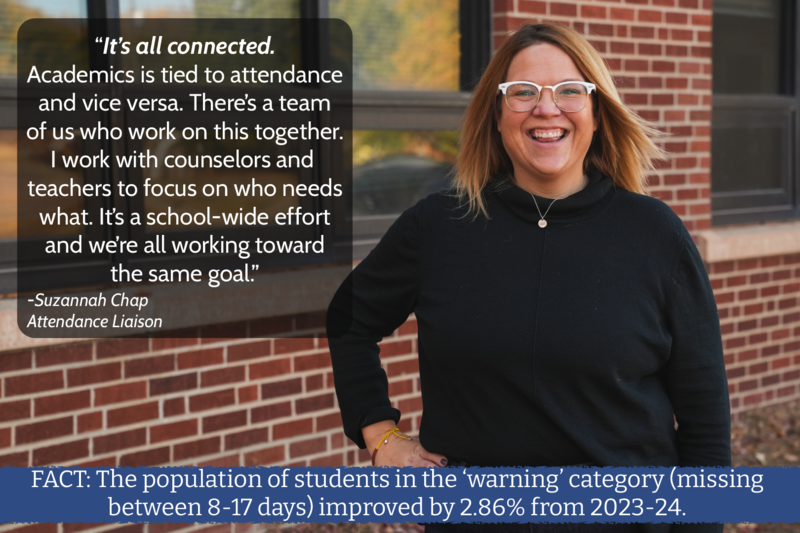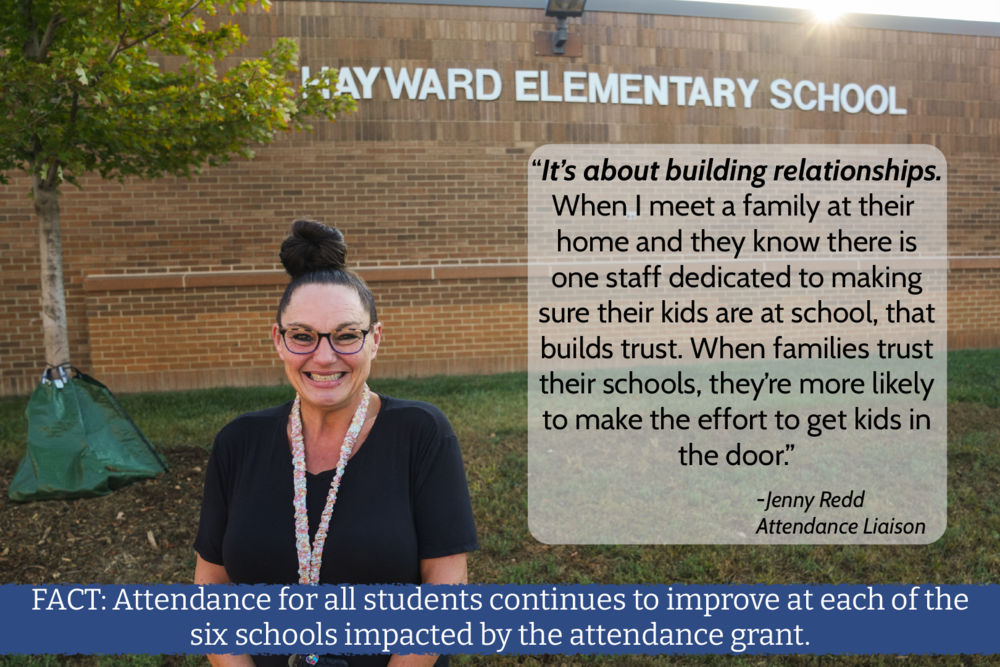At the start of the 2022-23 school year the Sioux Falls School District was awarded a $1.5 million grant to address the ongoing issue of chronic absenteeism. Chronic absenteeism is defined as a student missing more than 10% of the school year, or over 17 days total throughout the year. Students who are chronically absent are at an immediate disadvantage compared to their peers, and their likelihood of falling behind increases exponentially. Implementation of this grant allowed SFSD to hire six attendance liaisons and an academic recovery teacher shared between two middle schools. Attendance liaisons are present at four elementary schools and two middle schools, and their primary purpose is to get students who are chronically absent to school. Liaisons employ a variety of strategies to do this, but one overarching idea every liaison mentions is building relationships with families. Having one staff at a school dedicated to understanding the hardships a family may be facing when getting their kids to school builds trust, and when families can trust their schools they are more likely to make sure their students get in the doors everyday.
 According to data from the Attendance Grant Board Presentation (available here - item six) these efforts are moving the needle in the right direction. Since the implementation of the program, District-wide 'good' attendance has increased by about 5%, while chronic absenteeism has dropped about 2.4%. While these numbers may not seem huge, in a district with more than 24,000 students, that means hundreds of students are improving their attendance and working towards better academic achievement. When we look beyond the data and speak to the attendance liaisons, success stories from the program abound. One middle school saw 238 students improve their attendance by 20 or more days. Multiple elementary schools have seen dozens of students improve their attendance by 20 days or more. One liaison reported working closely with 69 students with chronic absenteeism, and through that work, 35 were able to move into the 'warning' category, and 10 students made it all the way to the 'good' attendance category.
According to data from the Attendance Grant Board Presentation (available here - item six) these efforts are moving the needle in the right direction. Since the implementation of the program, District-wide 'good' attendance has increased by about 5%, while chronic absenteeism has dropped about 2.4%. While these numbers may not seem huge, in a district with more than 24,000 students, that means hundreds of students are improving their attendance and working towards better academic achievement. When we look beyond the data and speak to the attendance liaisons, success stories from the program abound. One middle school saw 238 students improve their attendance by 20 or more days. Multiple elementary schools have seen dozens of students improve their attendance by 20 days or more. One liaison reported working closely with 69 students with chronic absenteeism, and through that work, 35 were able to move into the 'warning' category, and 10 students made it all the way to the 'good' attendance category.
 Attendance liaisons employ a wide variety of tools to help get kids to school. As mentioned earlier, it all starts with building relationships. Home visits and phone calls are a regular part of checking in with families when a student doesn't make it to school. During the 2024-25 school year approximately 7,800 unique contacts or supports were provided to families by attendance liaisons. These included:
Attendance liaisons employ a wide variety of tools to help get kids to school. As mentioned earlier, it all starts with building relationships. Home visits and phone calls are a regular part of checking in with families when a student doesn't make it to school. During the 2024-25 school year approximately 7,800 unique contacts or supports were provided to families by attendance liaisons. These included:
Over 2,000 phone calls
Over 500 direct emails
Over 3800 text messages
Over 350 home visits
Over 100 at-school meetings with families
Over 580 postcards sent to families
Over 200 additional contacts or intentional supports made, including: providing bus passes, giving rides, giving alarm clocks/wake up calls, walking students to school, and more. This all underscores the the fact that attendance liaisons will do whatever it takes to make sure students are getting to school.

While numbers and data tell part of the story, the true measure of success is seen each morning when more students walk through the doors ready to learn. Attendance liaisons have a passion for their work, and that passion comes from caring for their students. When speaking with attendance liaisons, even for a short amount of time, you are likely to hear all about their most recent success stories. Every liaison has at least a dozen stories of students overcoming adverse circumstances and improving their attendance to the next category. Every day that students show up for school is a victory, not just for the data, but for their futures.

